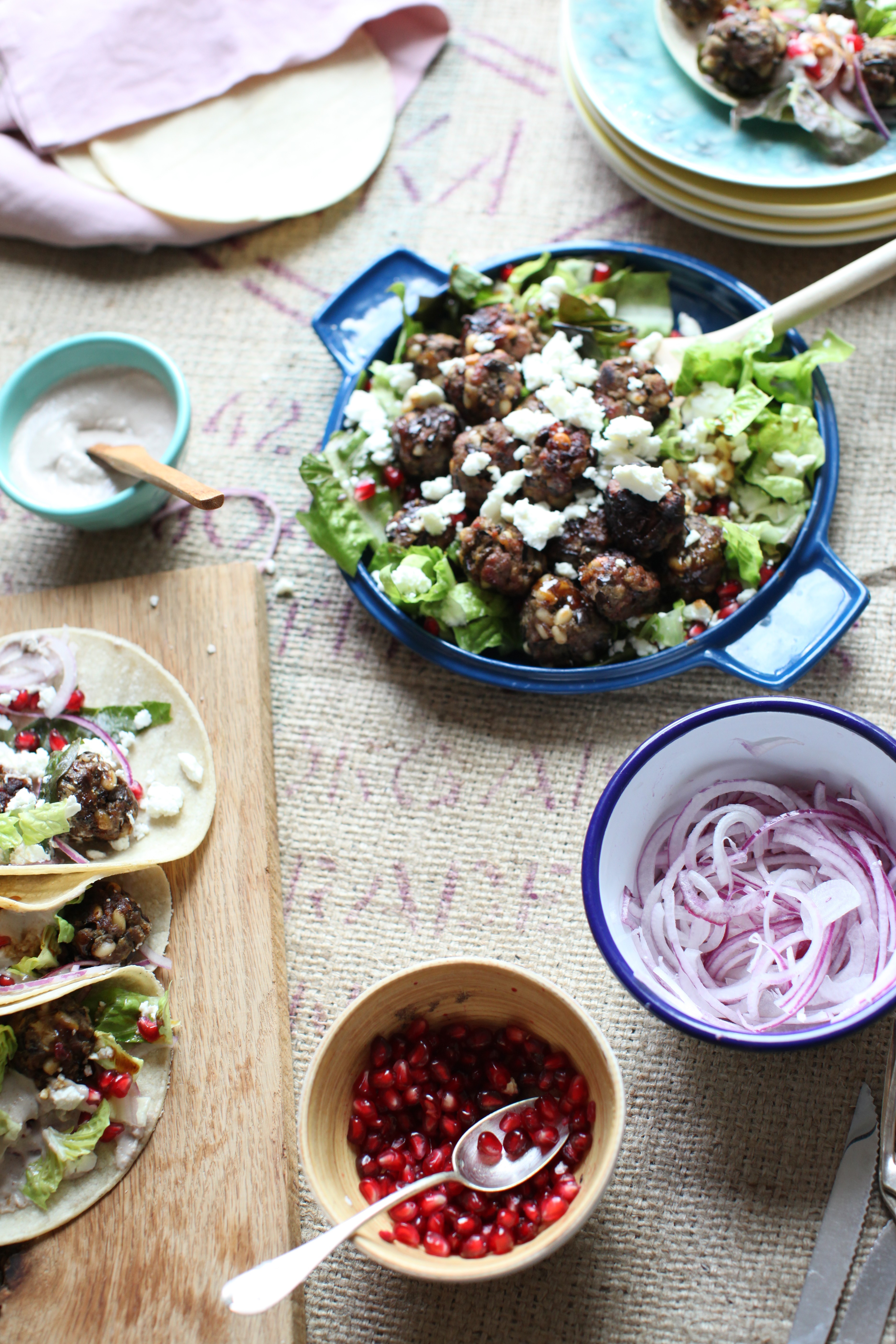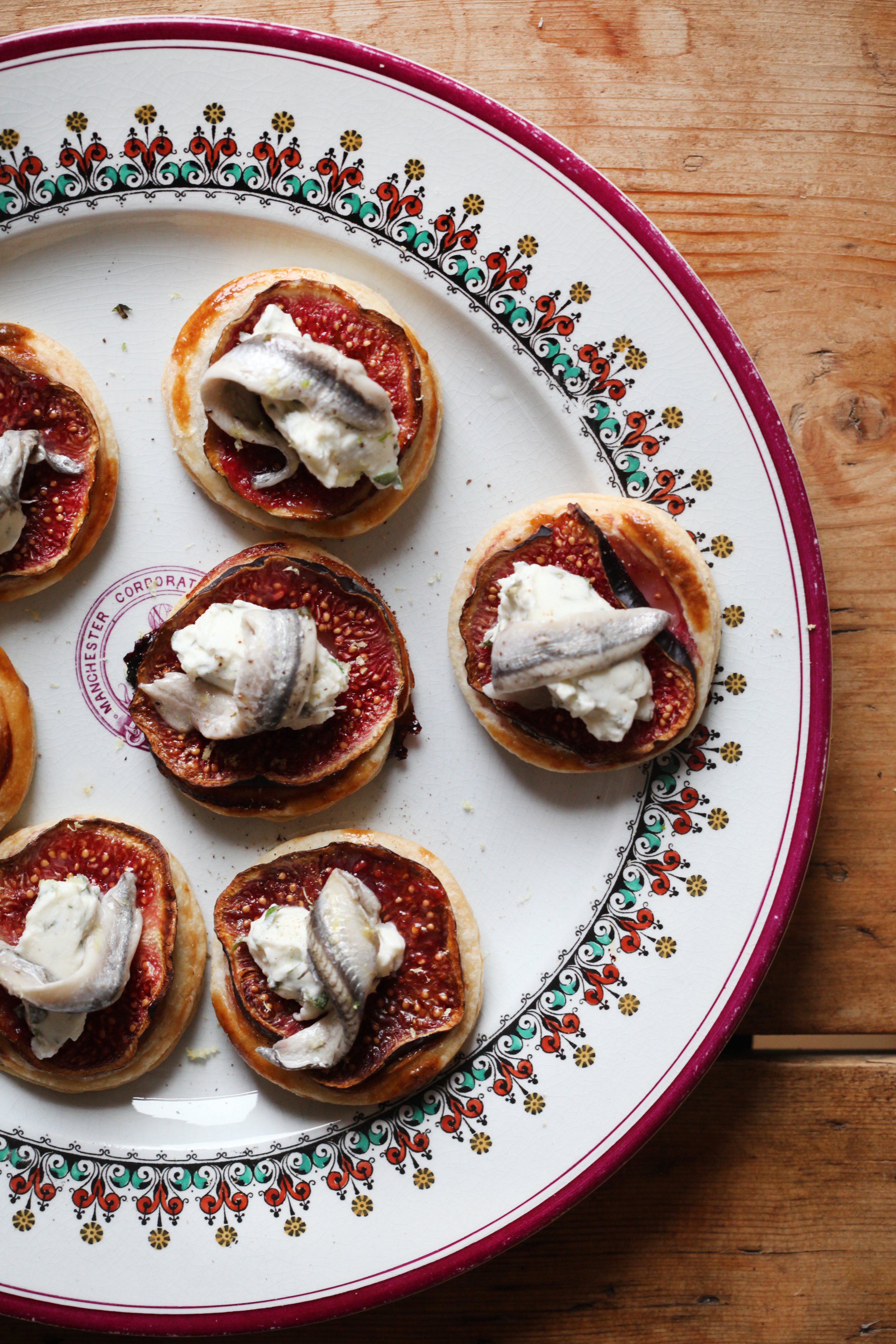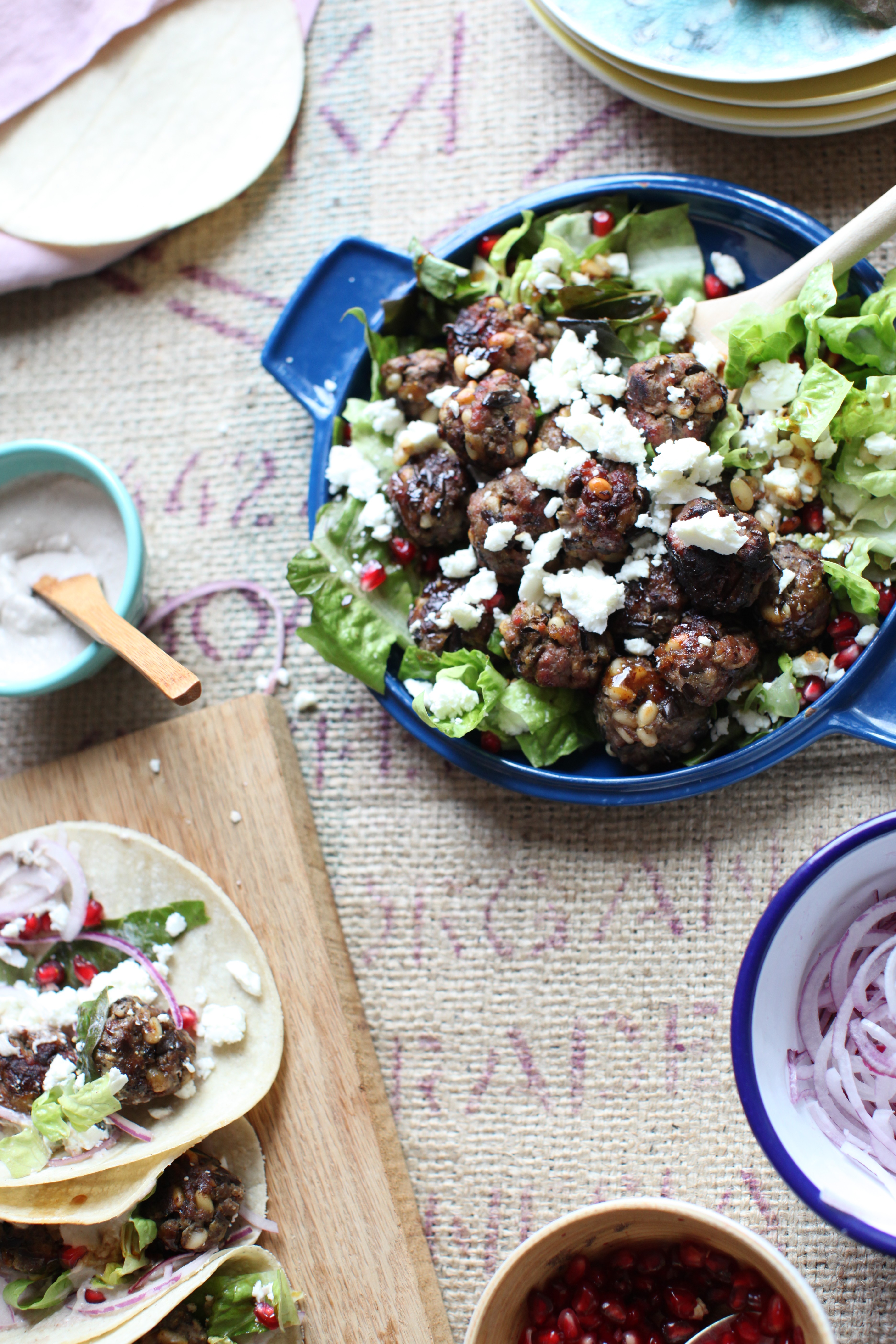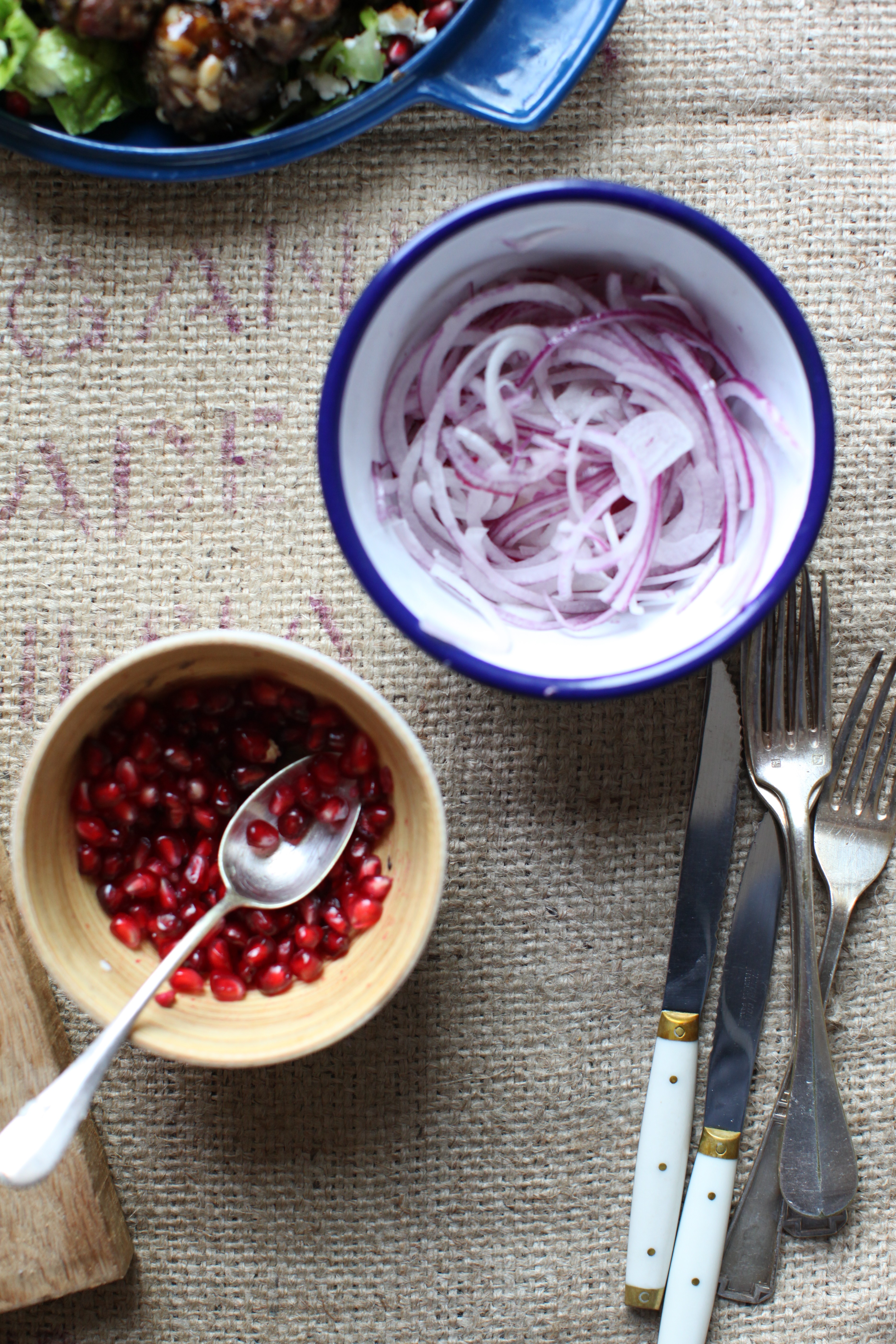Article
Sweet and Savoury
Words & Food Styling by Frankie UnsworthPhotography by Marco Carboni
Flavour pairings are a curious balancing act, and a highly subjective and cultural one at that. I am usually the first to extol the virtues of sweet and savoury combinations, which when married compatibly can form the basis of some of my favourite culinary unions; crunchy braeburns and poacher, black pudding and figs, mackerel and gooseberries, Eccles cakes and cheddar, pomegranate and…. well, most things, as Ottolenghi taught us.
But a recent visit to the US revealed such a seemingly subtle and established culinary equation, can turn nasty when taken to extremes. I love cornbread but here it came stodgy, sticky and sweet, as a pairing for a hot chilli. Cranberry sauce paired with roast turkey, could be a dream if the sauce were tart, but is generally jammy and sugary. I don’t want to point any fingers here or I will never be invited to a Thanksgiving dinner again, but marshmallows melting on sweet potatoes does not a happy marriage make. And despite what some may believe, the crunch of cornflakes will not save this from divorce.
At the other more discreet side of the spectrum are the Middle Eastern, Japanese and Vietnamese takes on the savoury and sweet equilibrium. Fesenjan, a Persian stew that owes its unctuousness to a combination of walnuts and pomegranate juice with slow cooked meat, is sweet but tart, and with that crunchy bottom of the pan burnt rice is a party in the mouth, of textures and tastes.
Equally, the Japanese have made an art form (and now might even boast a UNESCO listing for their harmonious washoku) of balancing the five taste groups, bitterness, sourness, sweetness, saltiness, and umami across their cuisine. Salty soy is offset by lightly sweetened mirin to make the tare sauce basted on yakitori skewers, while savoury red beans balance the sweetness in dorayaki pancakes.
On a recent trip to Vietnam I delightedly explored the South East Asian penchant for using conventionally savoury ingredients such as cassava (for their multi-coloured coconut dusted ‘worms’), mung beans (bobbing about in iced coconut milk), and more obviously, the sticky rice wrapped finger-sized bananas, which I munched hot from the grill fingers protected from banana leaf.
For those who like a sprinkle of salt in their butter caramels, chocolate in your chilli or adzuki beans in your desserts, I hope this little trio of dishes celebrates the happy union of savoury and sweet.
Aubergine meatballs, walnut tarator, pomegranate syrup
Serves 4
For the meatballs:
300g lamb mince
2 large aubergines
40g pine nuts, toasted
40g breadcrumbs
1 tsp sumac
sea salt & black pepper
100g feta cheese
50ml pomegranate molasses
1 pomegranate, deseeded
For the tarator (from Anissa Helou’s Modern Mezze):
1 garlic clove, peeled
50g walnuts
50g fresh breadcrumbs
3 tbsp lemon juice, or more to taste
3 tbsps extra virgin olive oil
about 75 ml of water, or to the desired consistency
to serve:
1 romaine head
corn tortillas (optional)
Preheat the oven to 180c. Slice the aubergine into ½ cm slices. Lay the aubergine slices on a tray or rack in the oven and dry them out for about 15 minutes, then finely chop them. Place in a bowl with the mince, pine nuts, breadcrumbs, sumac and seasoning (be generous here). Mix together really well. Wet your hands lightly and place about a heaped tablespoon of the mixture in your palm and roll it around to make meatball about the size of a squash ball. Repeat with the remaining mixture.
In the meantime, make the tarator. Blend the garlic, walnuts and breadcrumbs in a food processor. Add the lemon juice and olive oil. Pulse again, then with the motor running gradually add the water, bit by bit, to the consistency and taste you like. Check the seasoning and adjust if necessary.
Heat 2 tbsp of rapeseed oil in a large frying pan. Add the meatballs (in batches if necessary so as to not overcrowd the pan), then fry for 4-5 minutes until very well browned and cooked through. Set the meatballs aside, before adding the molasses to the frying pan along with a sprinkle of sumac. Add a splash of water to thin it slightly.
Roughly chop the romaine head and place in serving plate. Scatter the meatballs over the top. Add the pomegranate seeds and crumbled feta. Drizzle the syrup over the top. Serve with the walnut tarator and warmed corn tortillas.
Fig and anchovy tartlets with mascarpone cream
Makes approx. 16
300g All butter puff pastry
3 fresh plump figs
4 heaped tbsps. Mascarpone cheese
2 tbps fresh herbs, chopped (mix of parsley, mint, basil or whatever you have)
1 organic unwaxed lemon
16 marinated white anchovies ( boquerones)
salt and pepper
1 egg, beaten
Preheat your oven to 180c. Roll out the puff pastry to about ½ cm thick. Slice the figs about the same thickness and using a cookie cutter about 1 cm wider than the circumference of the fig slices, cut out rounds in the pastry. Place the rounds on a lined baking tray. Add the fig slices to the centre of each pastry round and brush the edges with the beaten egg. Bake in the oven until golden, and crisp underneath.
Leave to cool on a wire rack while you make the mascarpone cream. Mix the chopped herbs with the cream and lemon juice (to taste). Season. Using two teaspoons, shape a little dollop of the mascarpone onto each pastry, then fold an anchovy over the top. Serve as a canapé.
Avocado mousse and seedy brittle
This avocado mousse is inspired by an avocado sorbet I once ate at a Japanese restaurant in Paris, not overly sweet, creamy and subtle, which worked beautifully as a vibrant green finale.
2 egg whites
70g caster sugar
2 avocados
100g double cream, whipped to soft peaks
1 tbsp lime juice
1 tsp maple syrup
lime zest, to garnish
50g sesame seeds
50g mixed seeds
2 tbsps honey
40 g sugar
a pinch of sea salt
For the mousse, blend the avocado with the lime juice and maple syrup in a food processor until very smooth. Whip the egg whites until frothy, adding the sugar one tablespoon at a time until you reach firm peaks. Fold the avocado into the whipped cream, then fold the egg whites into the mixture, lightly but until fully incorporated. Divide between serving 4 glasses (depending on size). Leave to chill in the fridge for at least two hours.
Line a baking tray with paper. Toast the seeds lightly in a dry pan. Set aside. Heat the honey, salt and sugar in the pan until melted and bubbly. Cook for a couple of minutes, then tip the seeds into the melted honey. Stir well and quickly! Pour out of the pan and spread on to the baking tray. Place another piece of paper over the top and use a rolling pin to spread the mixture thinly. Leave to cool before cutting with a pizza cutter into shards.
Serve the brittle with the mousse for a light dessert.









